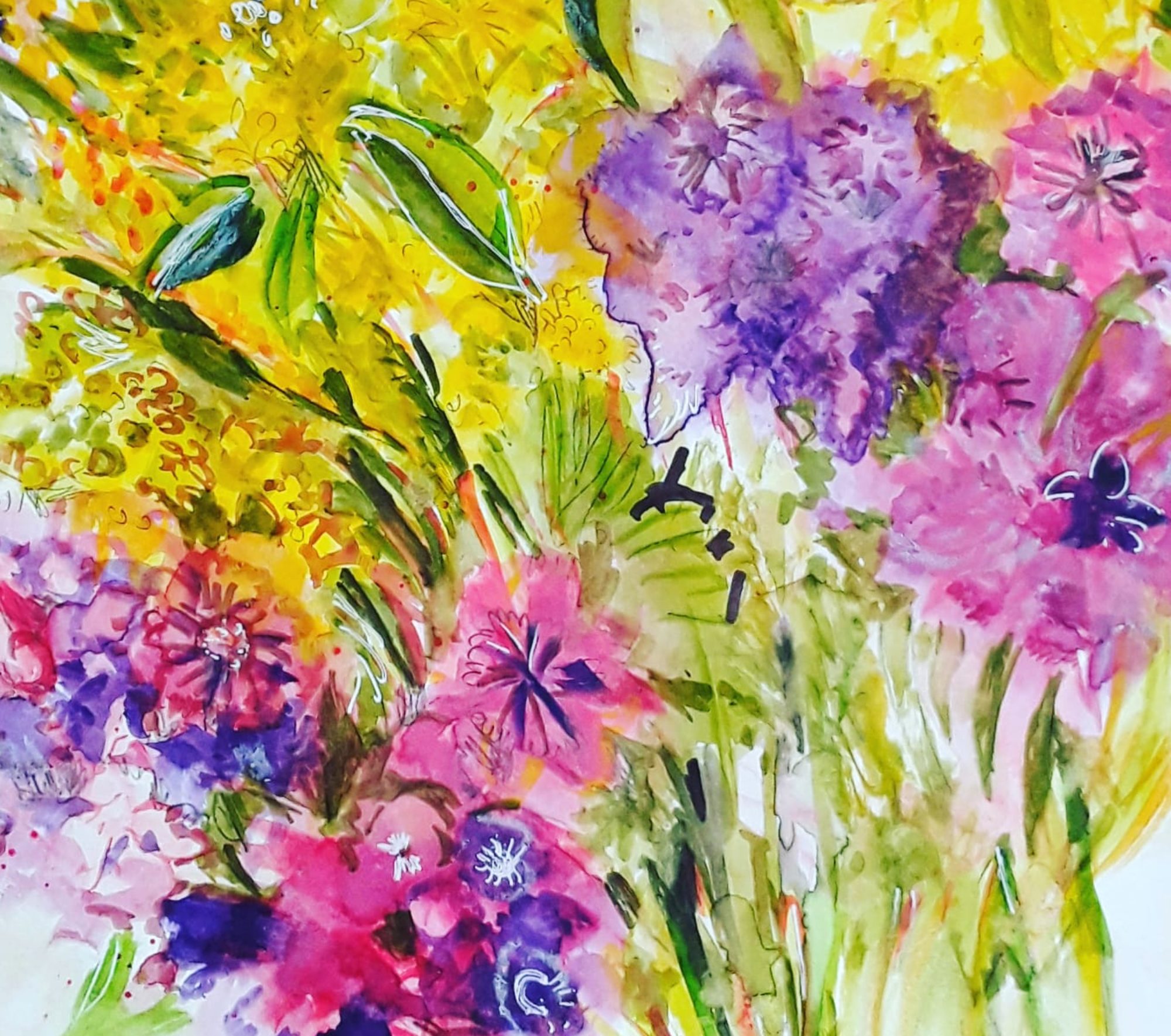
Good morning everyone. This is another of the little watercolour sketches I did on my hols in Derbyshire. In fact, it’s a sketch of the Birdcage arbour in the beautiful garden of Melbourne Hall. And we spent a very pleasant couple of hours there, despite the cool, drizzly weather. Unfortunately, the house itself wasn’t open, but the garden was not a disappointment at all. If you’d like to know, it was designed in the style of Le Notre as a formal French garden. And I chose this view, looking down the gently sloped lawns to the pond. Of course the viewpoint was the ornamental arbour, known as the Birdcage, for obvious reasons. Incidentally, it’s made of wrought iron, constructed to mimic wood, as in the originals in French chateau gardens.

As I was sitting on a lovely French style park bench, the slight drizzle turned into a downpour, so I quickly packed up my paints. And we ran for cover under a spectacular tunnel made of a double row of ancient yew trees. Honestly, we were bone dry under that gloomy, atmospheric canopy. However, the rain dried up and I went back to my bench to finish off my painting.
The Other Melbourne
Well, I should of course say the first Melbourne! Because the larger, more famous Melbourne in Australia was named in honour of our Lord Melbourne from this town in Derbyshire, UK. And, as you may know, this chap was Prime Minister to Queen Victoria in 1837. But, that’s another story!

And this is just one of my phone snaps that I plan to paint now I’m back home. But, that is no where near as much fun as painting in situ, en plein air (just to say it in French!)
A View over Melbourne Hall Gardens

And if you want to see a similar bird cage, in a very different context, see my painting ‘The Caged Bird’ in my gallery here.








